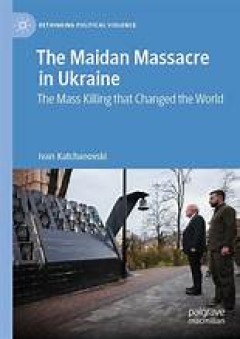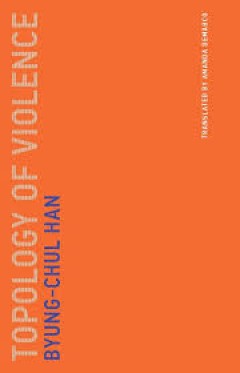Filter by

Homonegativity and Religiously Motivated Political Extremism : A Study Based …
This open access book describes the world’s increasingly multicultural societies face the problem that more and more diverse lifestyles (LGBTQIA+ communities) are not universally accepted, and that today, in addition to xenophobia, racism and anti-Semitism, there is substantial homonegativity. This book explores this issue, reviews the empirical literature on the subject and provides new empi…
- Edition
- -
- ISBN/ISSN
- 978-3-031-66202-7
- Collation
- XXIII, 114
- Series Title
- SpringerBriefs in Political Science (BRIEFSPOLITICAL)
- Call Number
- 320 TAU h

Political Islam and Religiously Motivated Political Extremism : An Internatio…
This open access book presents an international comparison of religiously motivated extremism in the Arab world and around the globe. Based on data from the Arab Barometer and the World Values Survey, it applies advanced statistical techniques to analyze how religiously motivated political extremism affects political and social outcomes as well as political violence. The study clearly shows tha…
- Edition
- -
- ISBN/ISSN
- 978-3-031-24854-2
- Collation
- XXIV, 88
- Series Title
- SpringerBriefs in Political Science (BRIEFSPOLITICAL)
- Call Number
- 320 TAU p

The Maidan Massacre in Ukraine
This open access book provides a comprehensive analysis of the Maidan massacre in Ukraine. It uses a theoretical framework of rational choice, moral hazard, state- repression backfire, and Weberian ideas about rational action to explore the massacre.
- Edition
- 1
- ISBN/ISSN
- 978-3-031-67121-0
- Collation
- -
- Series Title
- Rethinking Political Violence
- Call Number
- XIX, 266

Towards Gender Equality in Law
This Open Access book aims to find out how and why states in various regions and of diverse cultural backgrounds fail in their gender equality laws and policies. In doing this, the book maps out states’ failures in their legal systems and unpacks the clashes between different levels and forms of law—namely domestic laws, local regulations, or the implementation of international law, individ…
- Edition
- -
- ISBN/ISSN
- 978-3-030-98072-6
- Collation
- -
- Series Title
- -
- Call Number
- -

Negotiating Gender Equity in the Global Sout : The Politics of Domestic Viole…
The fact that women have achieved higher levels of political inclusion within low- and middle-income countries has generated much speculation about whether this is reaping broader benefits in tackling gender-based inequalities. This book uncovers the multiple political dynamics that influence governments to adopt and implement gender equity policies, pushing the debate beyond simply the role of…
- Edition
- -
- ISBN/ISSN
- 9781351245623
- Collation
- -
- Series Title
- -
- Call Number
- 300

Lives in Peace Research
This open access book explains how PRIO, the world’s oldest peace research institute, was founded and how it survived through crises. In this book, twenty-four of its researchers and associates, including Johan Galtung, Ingrid Eide, and Mari Holmboe Ruge, who founded the institute back in 1959, tell the stories of their roles in inventing and developing peace research. They reflect on their p…
- Edition
- 1
- ISBN/ISSN
- -
- Collation
- -
- Series Title
- Evidence-Based Approaches to Peace and Conflict Studies
- Call Number
- XX, 508

Islamistische Gewalttaten in Westeuropa
Dieses Open-Access-Buch behandelt die Frage, wie und warum es dazu kommt, dass Menschen schwere islamistische Gewalttaten, etwa in Form terroristischer Anschläge oder gewaltsamer Hasskriminalität, in Westeuropa begehen wollen. Das im Rahmen des Buches entwickelte Erklärungsmodell nähert sich der Beantwortung dieser Frage in zwei Schritten: erstens wird erklärt, wie und warum Menschen über…
- Edition
- 1
- ISBN/ISSN
- 978-3-658-39285-7
- Collation
- -
- Series Title
- -
- Call Number
- XIII, 263

Rethinking violence: States and non-state actors in conflict
"Foreword by Stathis N. Kalyvas."--Cover.Although major wars between sovereign states have become rare contemporary world politics has been rife with internal conflict, ethnic cleansing, and violence against civilians. This book asks how, why, and when states and non-state actors use violence against one another."States, nationalist movements, and ethnic groups in conflict with one another ofte…
- Edition
- -
- ISBN/ISSN
- 9780262266086
- Collation
- 1 online resource (xiii, 285 pages) :illustrations, maps.
- Series Title
- -
- Call Number
- -

Topology of violence
Originally published as Topologie der Gewalt. Berlin : Matthes & Seitz, 2011.One of today's most widely read philosophers considers the shift in violence from visible to invisible, from negativity to excess of positivity.Some things never disappear--violence, for example. Violence is ubiquitous and incessant but protean, varying its outward form according to the social constellation at hand. In…
- Edition
- -
- ISBN/ISSN
- 9780262345064
- Collation
- 1 online resource (153 pages)
- Series Title
- -
- Call Number
- -

Lockdown drills :connecting research and best practices for school administra…
"An examination of the role and impact of lockdown drills in America's schools, including consideration of arguments for and against these practices"--OCLC-licensed vendor bibliographic record.
- Edition
- -
- ISBN/ISSN
- 0262370700
- Collation
- 1 online resource.
- Series Title
- -
- Call Number
- -
 Computer Science, Information & General Works
Computer Science, Information & General Works  Philosophy & Psychology
Philosophy & Psychology  Religion
Religion  Social Sciences
Social Sciences  Language
Language  Pure Science
Pure Science  Applied Sciences
Applied Sciences  Art & Recreation
Art & Recreation  Literature
Literature  History & Geography
History & Geography